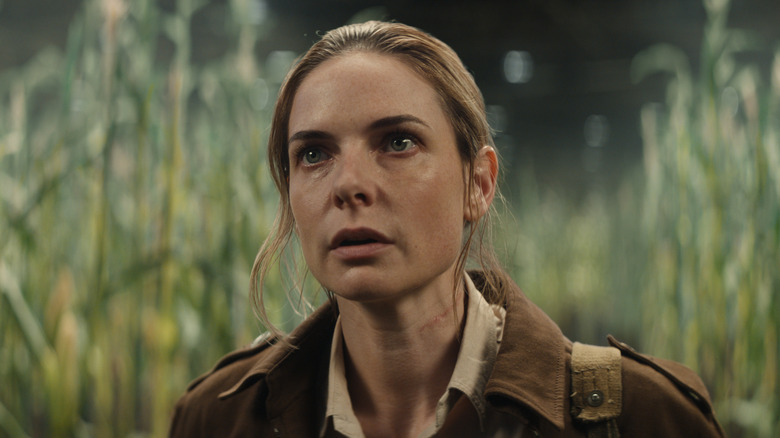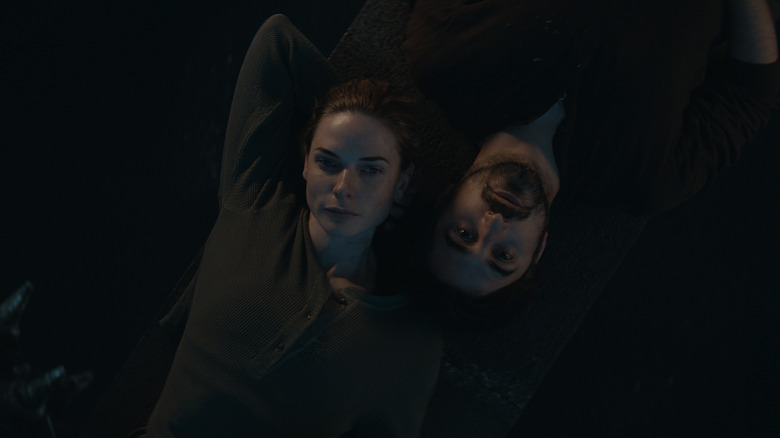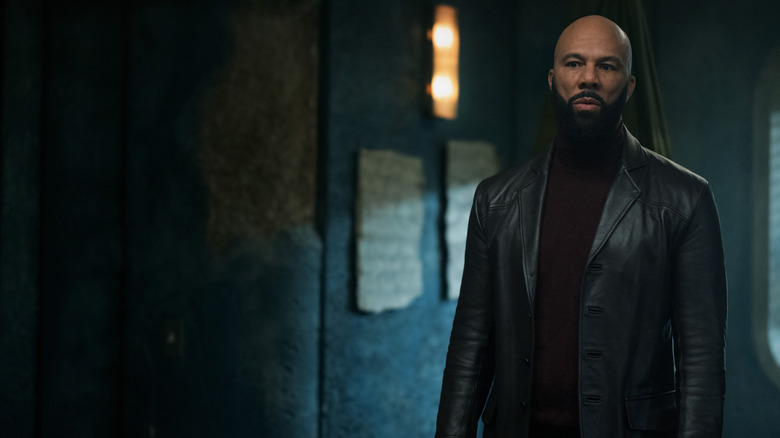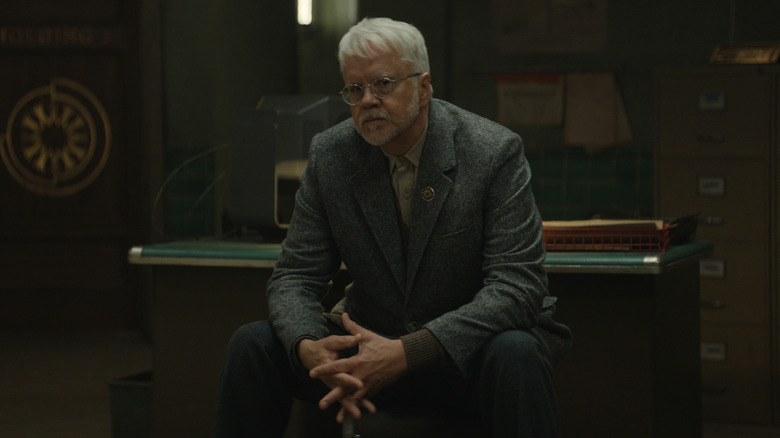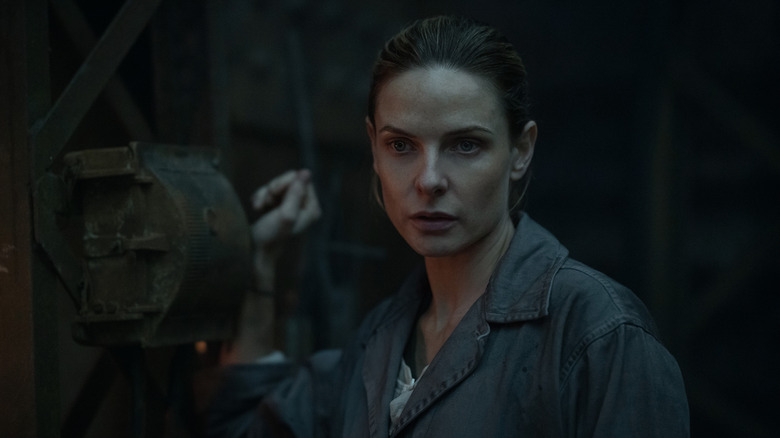Silo Book Series: What Order Should You Read It In & Is It Like The Show?
There is a long list of films and TV series following a dystopian future and survivors of some apocalyptic event that leaves humans on the brink of extinction. There are so many that studios have to come up with new and different ways to make the story interesting. In Apple TV's case, they turned to "Silo," a story following the 10,000 human survivors who live in a vertical silo reaching hundreds of stories underground. If you are a fan of the books, you will notice a few differences in the series versus what you found on the page.
Based on a trilogy of books by Hugh Howey, the series features Rebecca Ferguson ("Mission Impossible: Dead Reckoning," "Dune"), Rashida Jones ("Parks and Recreation," "The Office"), Tim Robbins ("The Shawshank Redemption," "Mystic River"), Common ("John Wick: Chapter 2," "Smokin Aces"), Iain Glen ("Game of Thrones," "Titans"), and David Oyelowo ("Selma," "Jack Reacher"). The stellar cast of talent navigates an underground world wrought with rumors of a cover-up, trying to work out whether the real world is as toxic as they are being told or if it is a lush and fertile land being hidden from them.
Of course, any time you adapt a story from another medium, there are bound to be some deviations from the source material. If you are looking to dive into the series, either in book form or the TV show, here is the proper order to read the novels and the differences you will find between the two versions.
This is the order in which you should read the three novels
There are three novels in the series by Hugh Howey, but it all starts with "Wool." The first novel sees the sheriff of the silo — the last remnants of humankind living deep underground to avoid the toxic environment above — leave the structure's safety, thrusting Juliette into a newfound role as the head of law enforcement. As a mechanic from the deep, she has little regard for the customs of the people up top. In her new position of authority, she gives the people the worst thing possible — hope.
"Shift" is the second book in the series, but it is a prequel to the original. This story sees a group of people commission a project to build 50 silos underground for the sake of human survival. Once they are complete, the area above them and all over the world is destroyed by nuclear weapons, rendering the surface unlivable for centuries. The novel deals with conspiracy, paranoia, and totalitarian rule.
The final novel in the series is called "Dust," and closes out all the stories from the previous novels. The story follows everyone left as they try to do the impossible — leave the silos once and for all, and try to rebuild humankind on the surface. The novels tell an amazing story from apocalypse to rebirth, but not all of it translated to the screen, causing a few deviations on the TV show.
There are some additions to the show
Adding aspects to the live-action adaptation of a book series is nothing new, and "Silo" presents two aspects that never appeared in the books but could play huge roles in the series later on, as they may turn the tide of any situation.
The first is The Syndrome. While it is a little mysterious as to what exactly it is, it seems like it is a medical condition that the leadership fears. A Reddit thread deciphered a poster in the background that revealed the progression of the condition starts with twitching and shaking, followed by muscle spasms, impaired movement, and then finally an attack of the brain that causes a complete shutdown of the entire nervous system. In a small, enclosed space, the thought of an outbreak is a terrifying prospect.
The second is the Flamekeepers. In the novels, rebellions and uprisings happened often enough that the higher-ups had a process in place for the silos that committed the act. Called a "resetting," they would lower the population and give amnesia-inducing medication to the remaining citizens. If they couldn't quell the uprising, they would terminate all of them with poison gas. In the series, these rebels are known as Flamekeepers. While the books never gave them a name, the fact that Juliette (Ferguson) and Billings (Chinaza Uche) are connected by their mothers, revealed to have been Flamekeepers, suggests we will see more defiant citizens.
The series is more mysterious than the books
"Silo" keeps you guessing from the moment it takes off by creating questions for the audience without giving you the answers. As a viewer, no answer is easy to come by, and you have to think and work for it. The books were straightforward with their plots and their developments, not giving a lot of mystery or twists and turns for the reader. Instead of winding down a twisting path, the reader is more focused on the next rung of a ladder to get to the story's climax.
One example of this is when Holston (David Oyelowo) leaves the silo, revealing a lush green landscape on his viewing screen. However, when he lifts the screen and exposes himself to the outside world, he perishes. This leaves the viewer wondering what the surface world looks like. In the books, Hugh Howey doesn't hesitate to reveal that the world outside the silo is toxic and that anyone who steps outside it won't last long.
Another example of this is the difference in Bernard Holland (Tim Robbins). In the series, Holland is willing to help Juliette, which makes his motives and moral compass ambiguous. However, in the novels, it is established very early that he is the big bad, the one that controls the silo and someone to look out for. While both approaches are valid storytelling techniques, the approach by the TV series keeps viewers on the edge of their seats.
Juliette is colder than her book version
Every series needs a protagonist to root for. And in "Silo," the protagonist is Juliette. While the engineer-turned-sheriff in the book version is a strong protagonist in her own right, Rebecca Ferguson's iteration of the character is tough as nails and a bit abrasive to the people around her. She is strong and capable, someone that a viewer can believe would be able to accomplish what she goes through with each episode. The trade-off, however, is a character that comes off colder and more rough around the edges.
She isn't the only character that changes from the books. Along with Juliette and Bernard Holland, as mentioned earlier, other characters have been altered in small ways to create intrigue, depth, and storyline flow. For instance, there is a bigger focus on Holston's assistance in helping Juliette unravel the mysteries of the silo; in the books, there is very little connection between the two. Shirley (Remmie Milner) appears very early in the series while not appearing until much later in the books, and there is a lot more focus on the trauma caused by the death of George Wilkins (Ferdinand Kingsley) in the series than there is in the books.
The result of the changes from the books to the TV show is a fresh take on a trilogy that already has a compelling storyline and mind-blowing finale. The series is shaping up to do the same for viewers as they added more storylines and more depth to the drama unfolding hundreds of floors beneath the surface.
